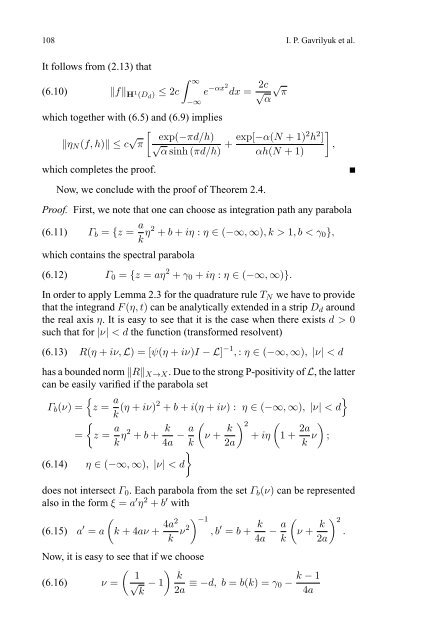H-Matrix approximation for the operator exponential with applications
H-Matrix approximation for the operator exponential with applications
H-Matrix approximation for the operator exponential with applications
Create successful ePaper yourself
Turn your PDF publications into a flip-book with our unique Google optimized e-Paper software.
108 I. P. Gavrilyuk et al.<br />
It follows from (2.13) that<br />
(6.10) ‖f‖ H 1 (D d ) ≤ 2c<br />
∫ ∞<br />
−∞<br />
which toge<strong>the</strong>r <strong>with</strong> (6.5) and (6.9) implies<br />
‖η N (f,h)‖ ≤c √ [ exp(−πd/h)<br />
π<br />
which completes <strong>the</strong> proof.<br />
e −αx2 dx = 2c √ α<br />
√ π<br />
√ α sinh (πd/h)<br />
+ exp[−α(N +1)2 h 2 ]<br />
αh(N +1)<br />
Now, we conclude <strong>with</strong> <strong>the</strong> proof of Theorem 2.4.<br />
Proof. First, we note that one can choose as integration path any parabola<br />
(6.11) Γ b = {z = a k η2 + b + iη : η ∈ (−∞, ∞),k >1,b0<br />
suchthat <strong>for</strong> |ν|
















